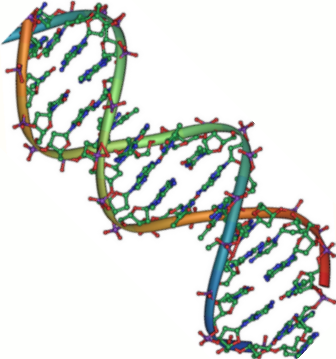
It's the last day of the AAAS meeting today, and one of the most fascinating themes has been the sessions on various weird and wonderful types of life. All kinds of fundamental questions in biology -how likely is life to arise, does it have to be based on DNA, how you define life in the first place - are difficult to answer with a sample size of one, ie the life we know that has originated on Earth. So for biologists trying to answer these questions, the dream would be to have a second sample, an alternative kind of life to compare to the life we already know.
Many of them are working to make this a reality, by trying to synthesise different types of artificial life, and they're making good progress. For example, Tony Forster of Vanderbilt University and his colleagues started with a normal bacterial cell and worked out what would be the minimal components needed for it to survive. They reckon the least they can get away with is 151 genes, which is just one fifth the size of the smallest known natural genome (belonging to a bacterium called Mycoplasma). The plan now is to build all these components from scratch, and compile them into a working cell. That's a fair way off of course, but Foster is confident that it will be possible.
Meanwhile others are taking a more stripped down approach. Sheref Mansy of the University of Denver makes cell-like structures out of fatty acid molecules. Under the right conditions the fatty acids form a double membrane a bit like a cell membrane, and coalesce into spherical vesicles. The vesicles can grow in size, and Mansy has even managed to replicate short snatches of DNA inside them. Next he hopes to coax them to divide.
A key requirement in many definitions of life, however, is the ability to evolve by natural selection. And this is something that Steven Benner of the Foundation of Applied Molecular Evolution has been able to achieve. He and his colleagues synthesised RNA-like molecules using an alphabet of six different genetic letters (the four used by normal life, plus two artificial ones). They were able to get these molecules to replicate in a test tube. What's more, when errors arose in the replication, those errors were passed on to the next generation of molecules - just as occurs in Darwinian evolution.
Is this life? It meets nearly all of the requirements in NASA's formal definition of life: "A self-sustaining chemical system capable of Darwinian evolution." But it falls down on the "self-sustaining" part. Benner has to continually add a soup of raw materials and enzymes to keep the reaction going. Next he hopes to create a system in which the genetic template can catalyse its own replication. Then biologists could have an argument over whether the result should count as life. Even though it's not included in the NASA definition, many may feel that the system would also need to be enclosed inside cells, like Mansy's, before they hail it as living. I think this is a bar that will keep moving as the research advances.
But perhaps all we need to do to find new forms of life is to look around us. Physicist and astrobiologist Paul Davies pointed out that alternative creatures might exist on Earth already, right under our noses. If life originated on Earth once, he said, perhaps it originated several times, leading to two or more unrelated lineages. If so, this "other" life might have died out early on, or it might have integrated with the early organisms from which we are descended. But in his talk he focused on a third, more exciting possibility, that it might still be living alongside us today. He calls the idea a "shadow biosphere".
To find this weird life, he suggested looking in environments where normal life can't survive, such as extremes of temperature, salt, or radiation. Or you could run an experiment with conditions that would kill off normal organisms, for example by disrupting the normal genetic code, and see if anything grows.
Davies thinks these shadows would have to be microbes, or we'd have noticed them already. He points out that only a fraction of microbial species have ever been cultured in the lab, in fact many of them seem impossible to grow, no matter what conditions researchers try - so maybe some of them are living by different rules. I used to be a microbiologist, and I'd get very frustrated when my cultures didn't grow. It never occurred to me that I might be dealing with aliens.